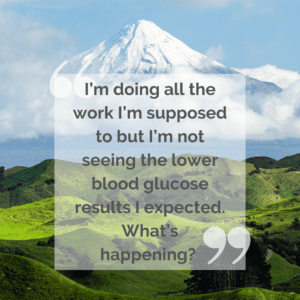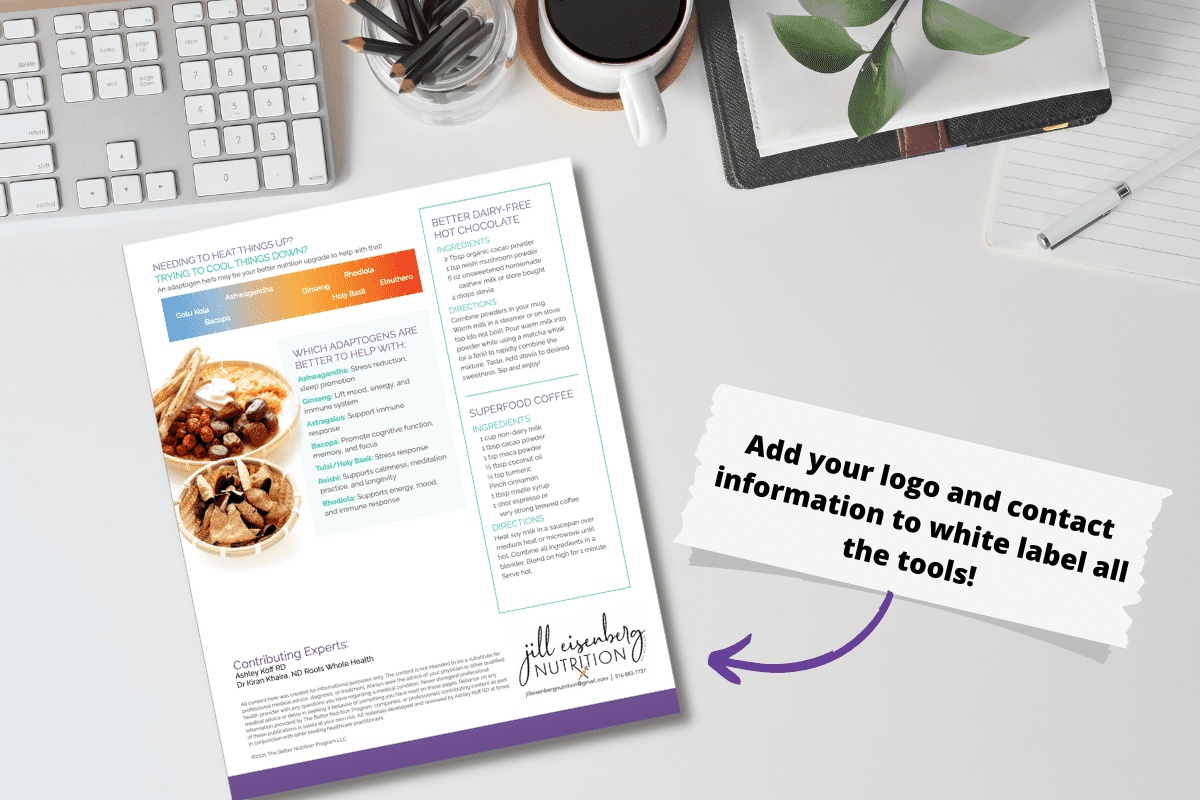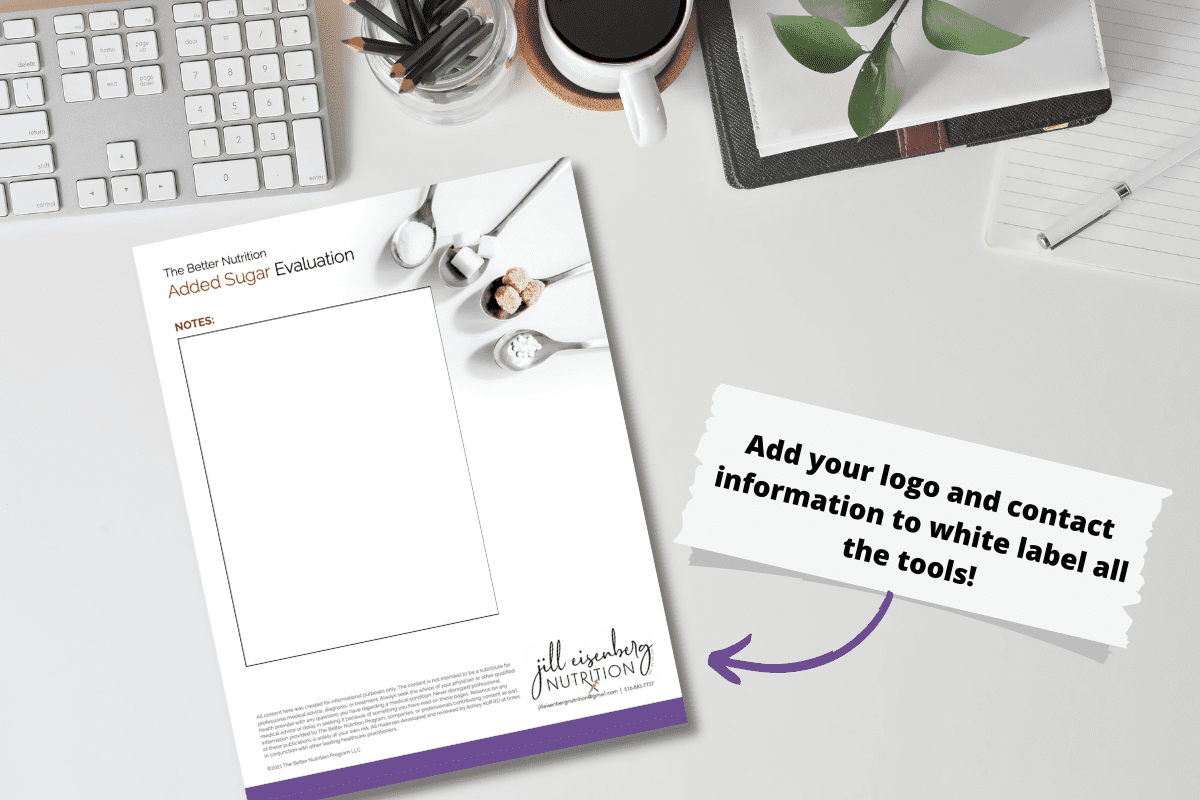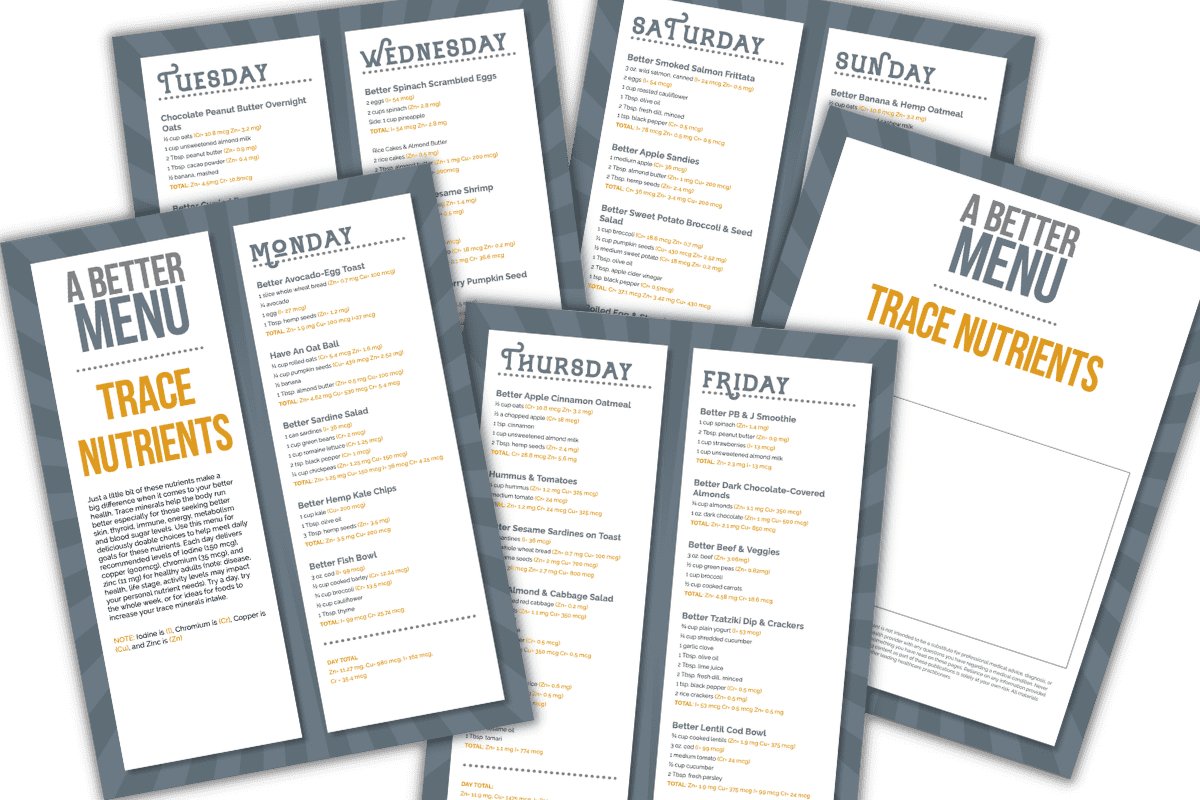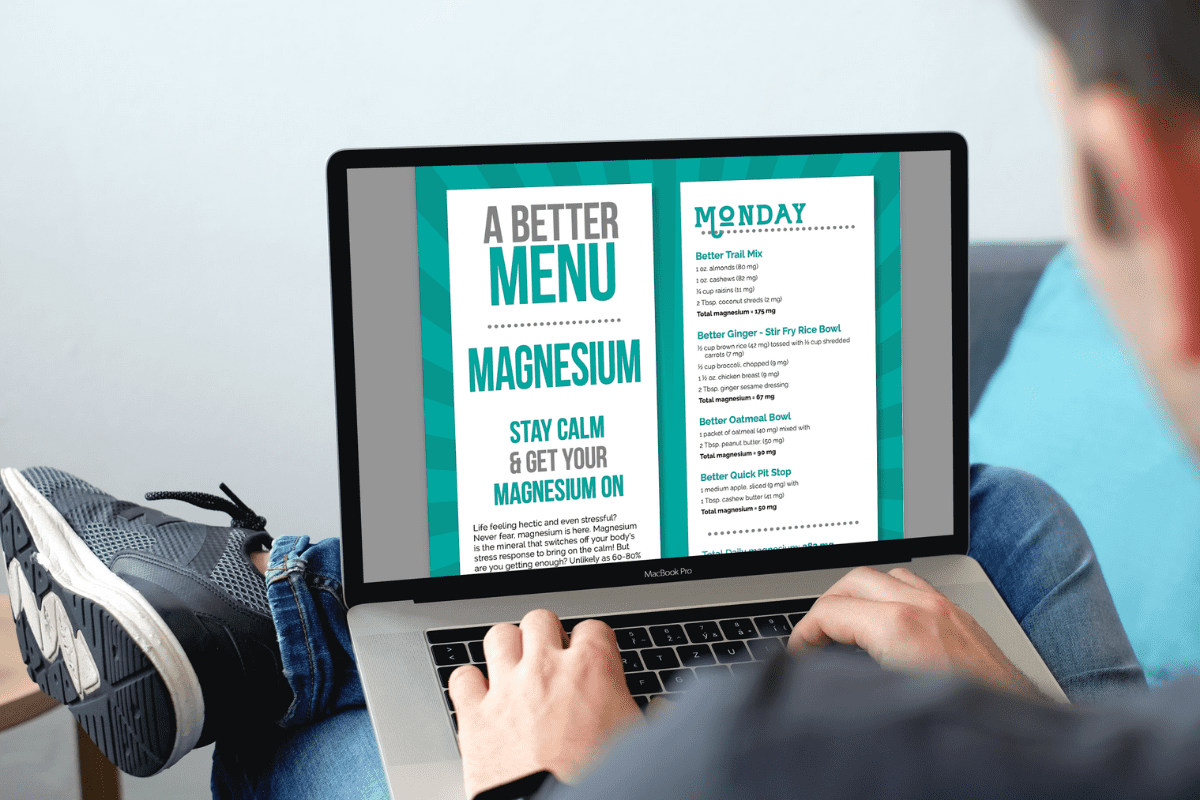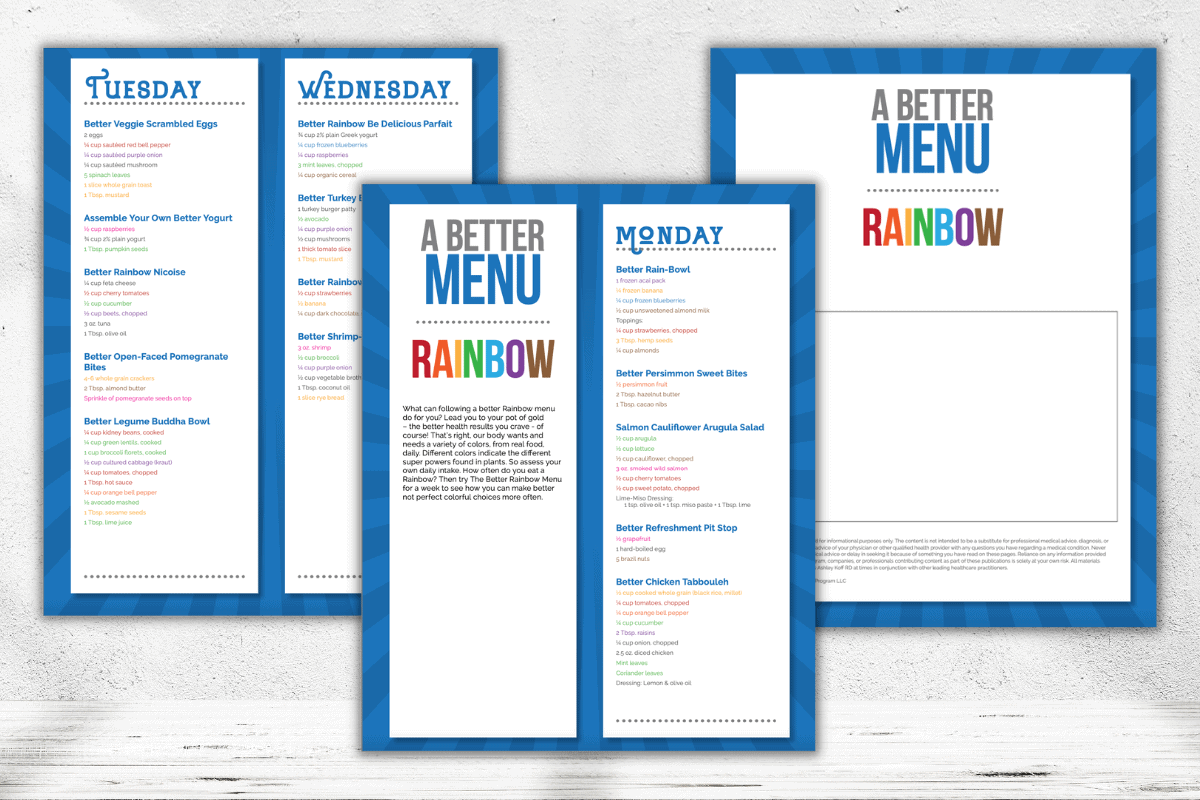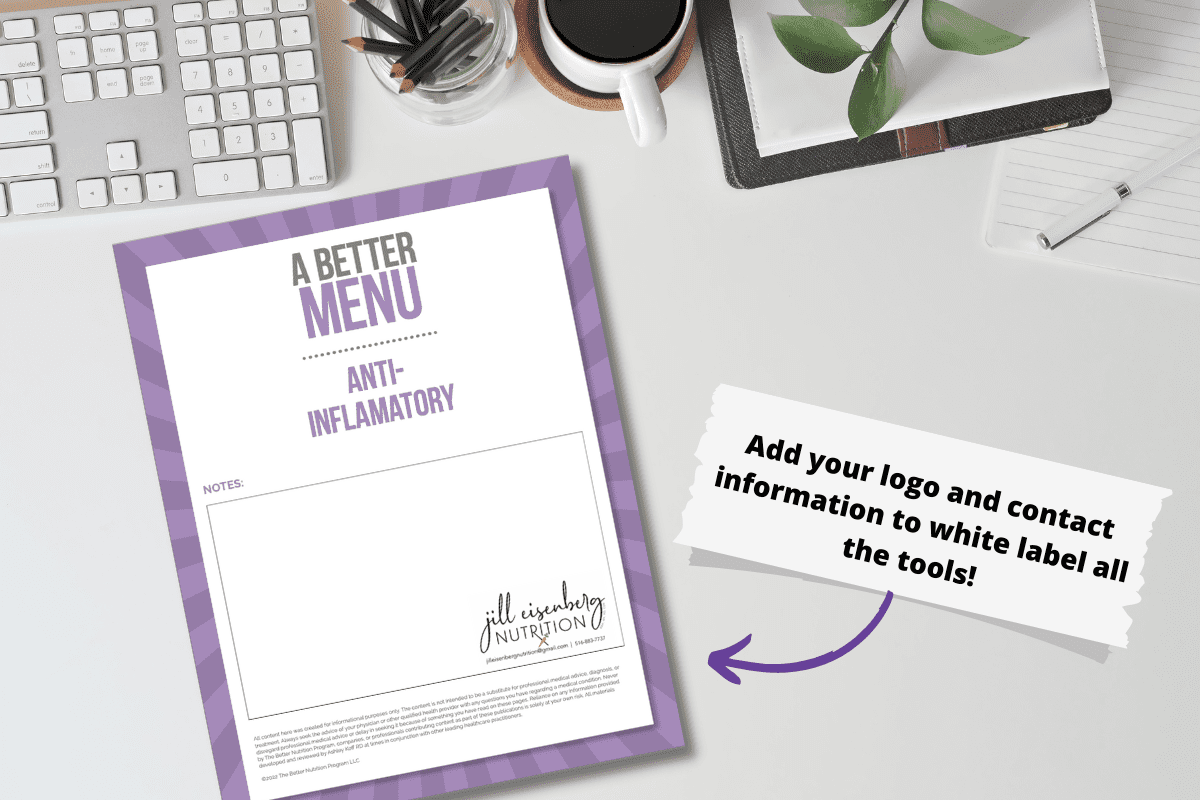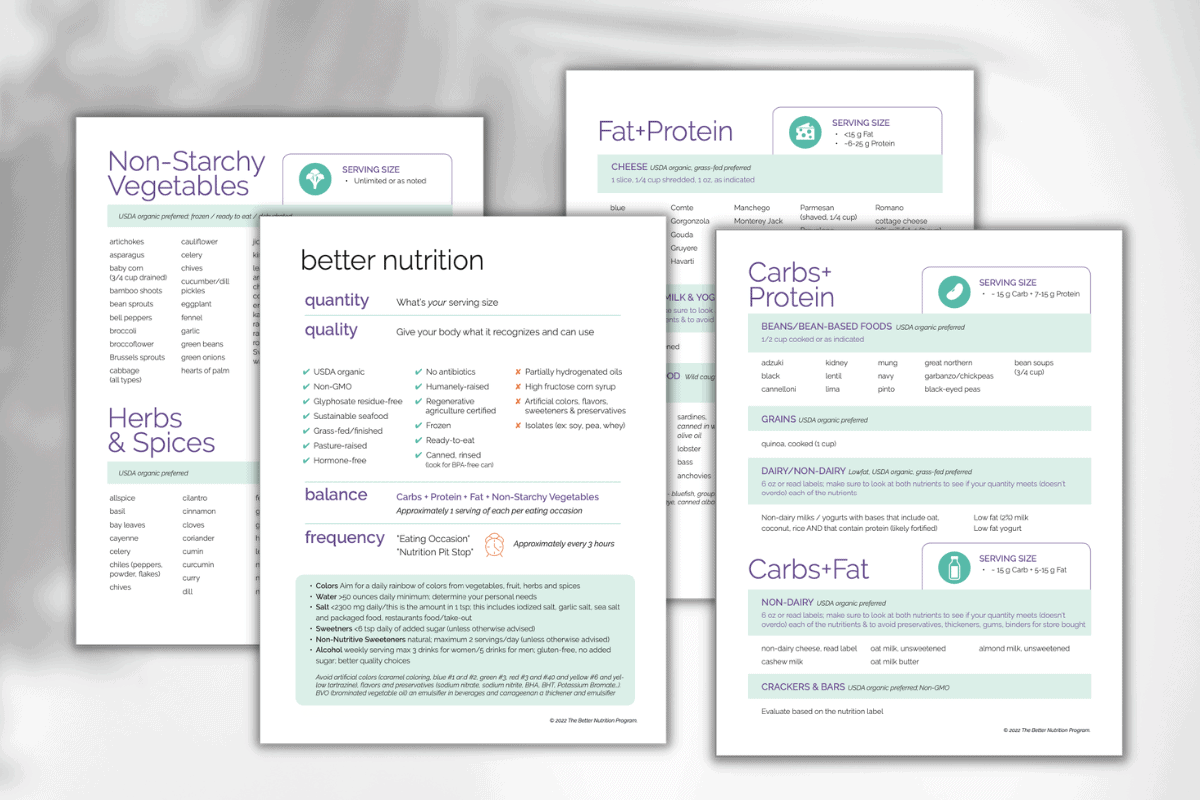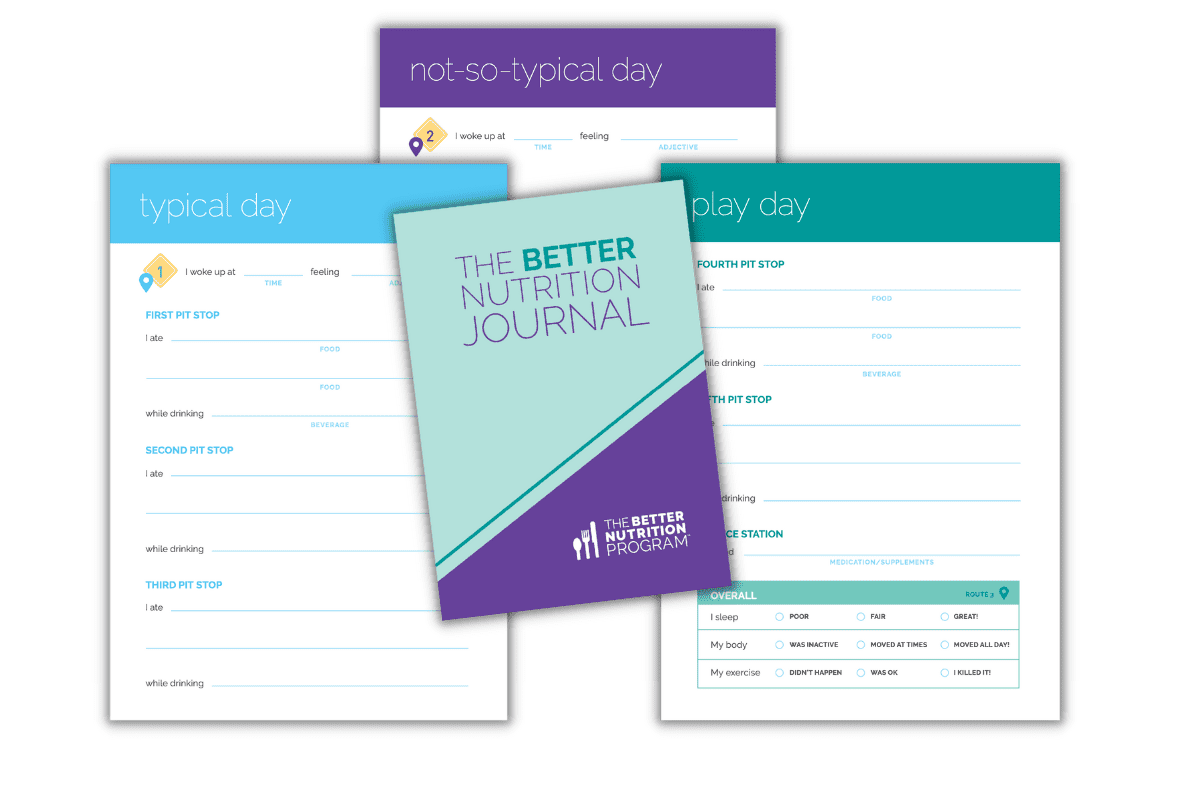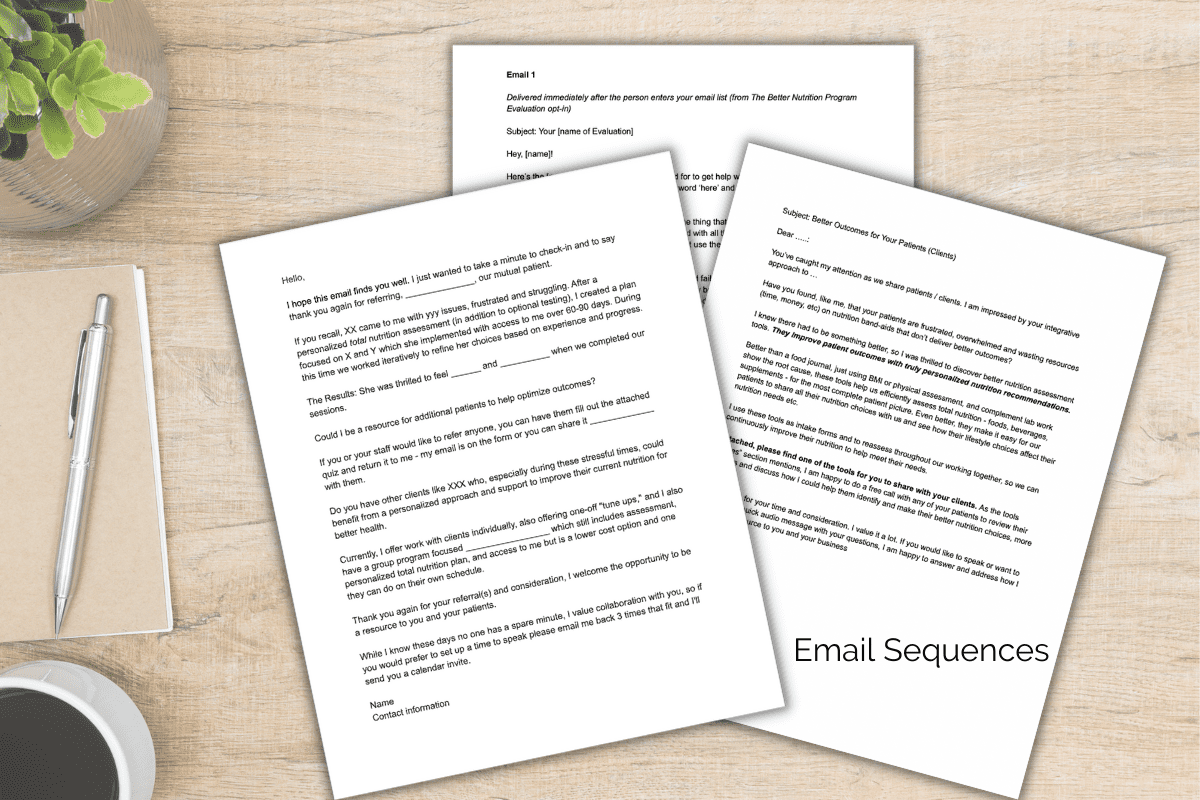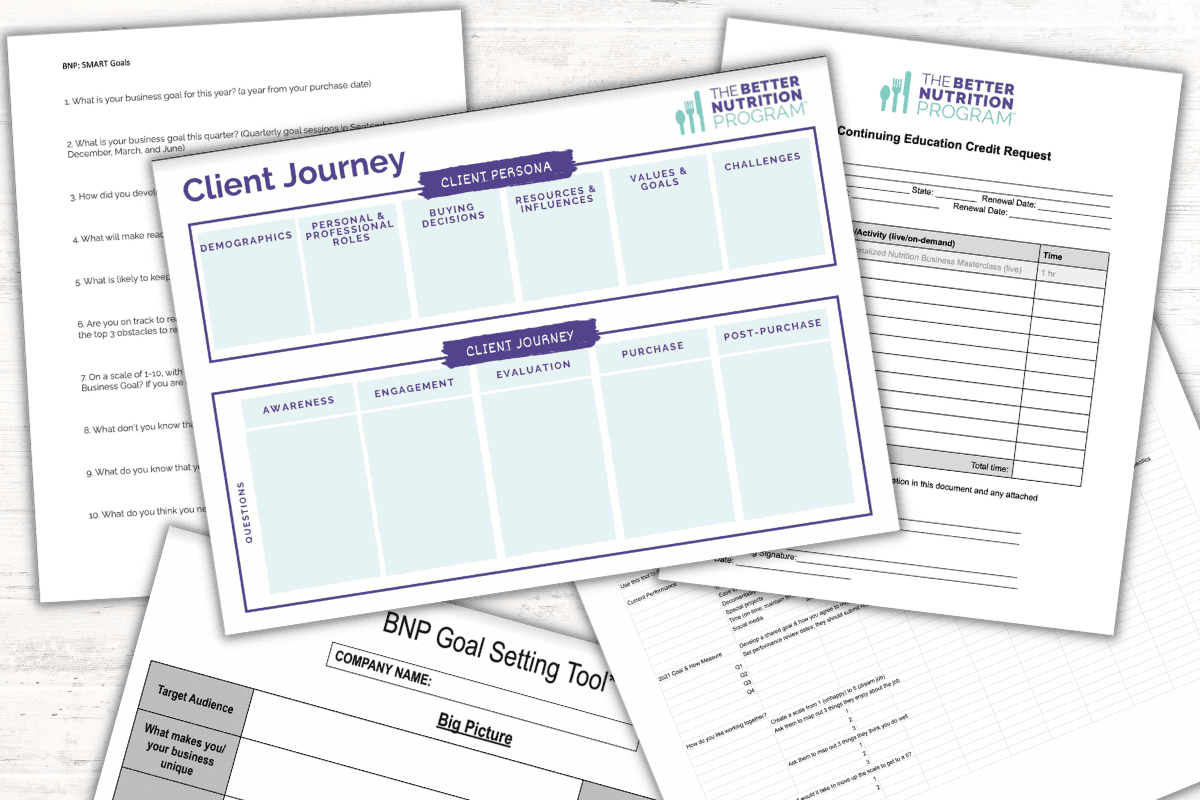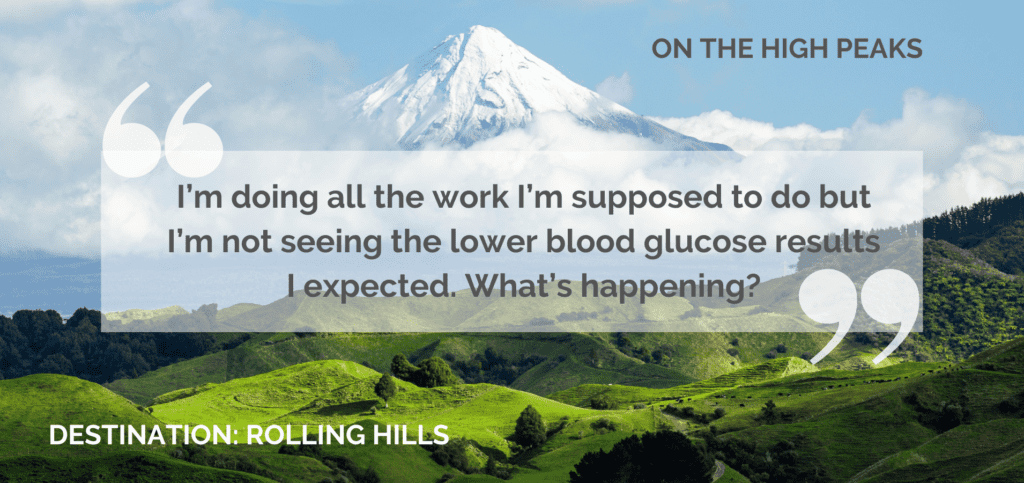
Have you been discouraged by your blood sugar readings when wearing a continuous glucose monitor (CGM) and doing all the right things? This can be extremely frustrating, but it doesn’t mean you are doing anything wrong, in fact, it’s revealing important data about your body. So let’s see what your body is trying to tell us about your blood sugar and its needs.
I’m eating right and exercising but I don’t understand why my blood sugars are still higher?
First, exhale as stress is one of those 40+ non-food related factors that elevates blood sugar levels. Know this: there is no perfect blood sugar number. In fact, the pursuit of perfect blood sugar is perfectly wrong (no matter what the Instagramer or TikToker sharing their numbers says). Your blood sugar will (and should) go up and down. Optimization means we know why and that it looks more like rolling hills than peaks and valleys, more often.
I’ve tried fasting — a 10 hour window and even a 24 hour fast — and my blood sugar isn’t budging. It even went up!
Fasting has many benefits and the fasting duration that is helpful for each person differs. Even for the same person, how fasting impacts your body can vary across different times of the year and for other reasons. So when we see that a longer fast — like 16, 18, or 24 hours — does not reduce fasting blood sugar levels for someone, we want to experiment with not fasting. Why? The liver will release glucose when it senses a fasting state, so this may actually be working against you. It’s worth experimenting with an eating/caloric window of 12 hours to see if this improves your fasting blood sugar.
My nighttime blood sugar levels look good but they are higher before breakfast! How does that make sense?
One of the benefits of The BNP Continuous Glucose Program™ is that in addition to having your own coach, our clinical team reviews your data in real-time and personalizes experiments to ensure we get as much and the most meaningful data from the days you are wearing your sensor. In this particular case, we may need some additional data and would advise scanning your CGM upon waking WHILE still in bed (right away) to check that level. We may also want an insulin level which is a blood lab test we can help you get or you can request from your practitioner.
I’m drinking a ton of water so there’s no way hydration could be the issue, right?
It’s important to consider that your body may not have enough of what it needs to optimize blood sugar levels. Your nutrient status as well as your water intake and water quality will all affect hydration and, as a result, blood sugar levels. It may be useful to do the hydration absorption test — complete the form below to get our Guide to Better Hydration which features an easy at-home test — and/or a micronutrient lab panel to see if you have sufficient levels of the minerals that support better blood sugar. If you’re in The BNP Continuous Glucose Program™, you can add this lab test on or if you are not yet enrolled, you can order the lab test through our store or have our team evaluate your existing labs and other data to personalize your health action plan.
I just can’t get my fasting glucose under 100!
It is possible that is not the right goal for you today or ever. The great part of personalizing your plan with real data from your CGM is it helps us set realistic goals for your body and your health. Goals should be set based on life stage and current health. The most important goal is to get a steady, rolling hills-type blood sugar rather than high peaks and valleys and to understand what choices drive your sugars Everest high or Death Valley low so you can work to avoid those more often.
If you’re ready to work on taking your blood sugar from peaks and valleys to rolling hills, The BNP Continuous Glucose Monitor Program™ will give you a personalized approach to reaching your goals. Click here for more info.
